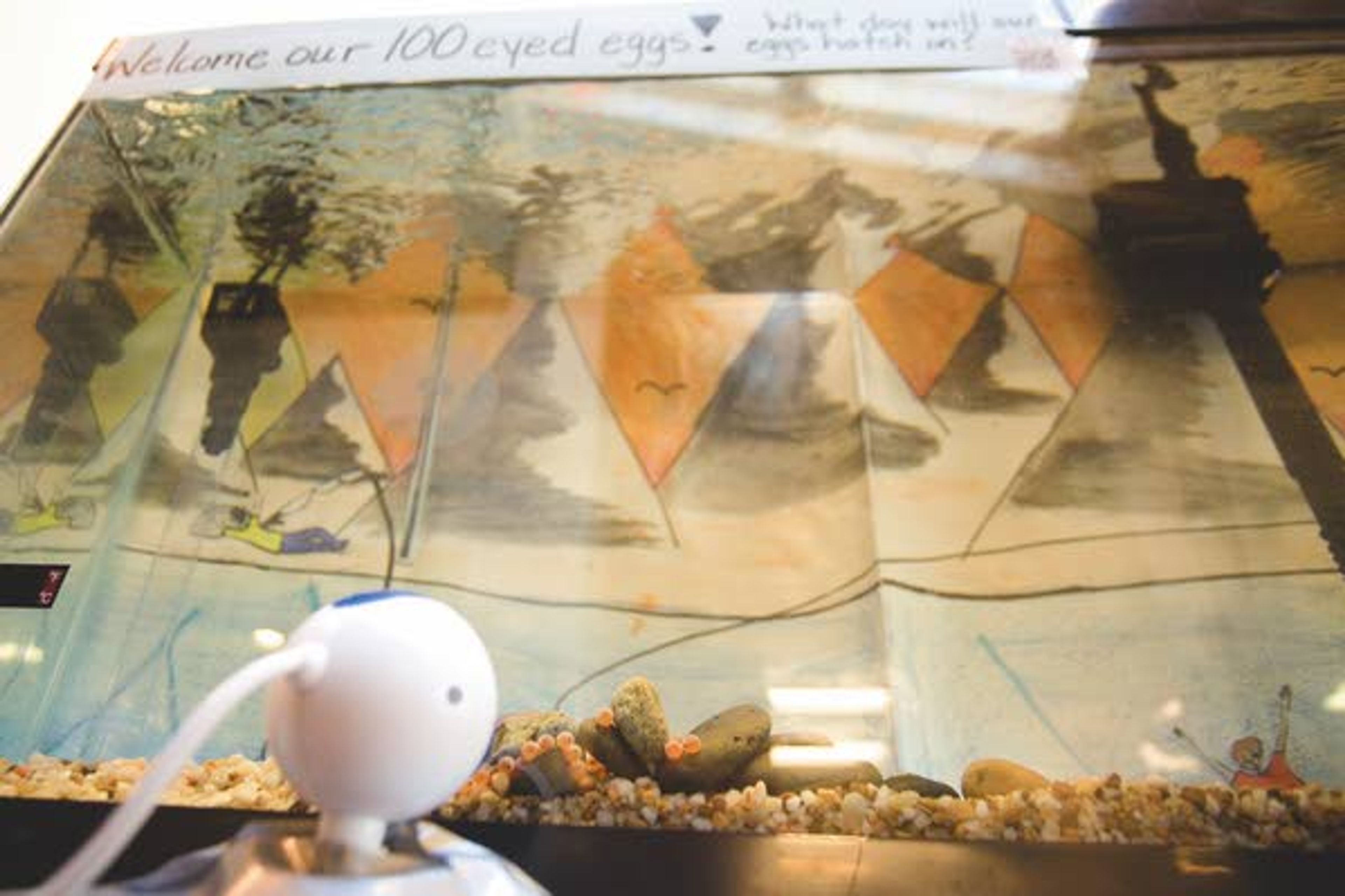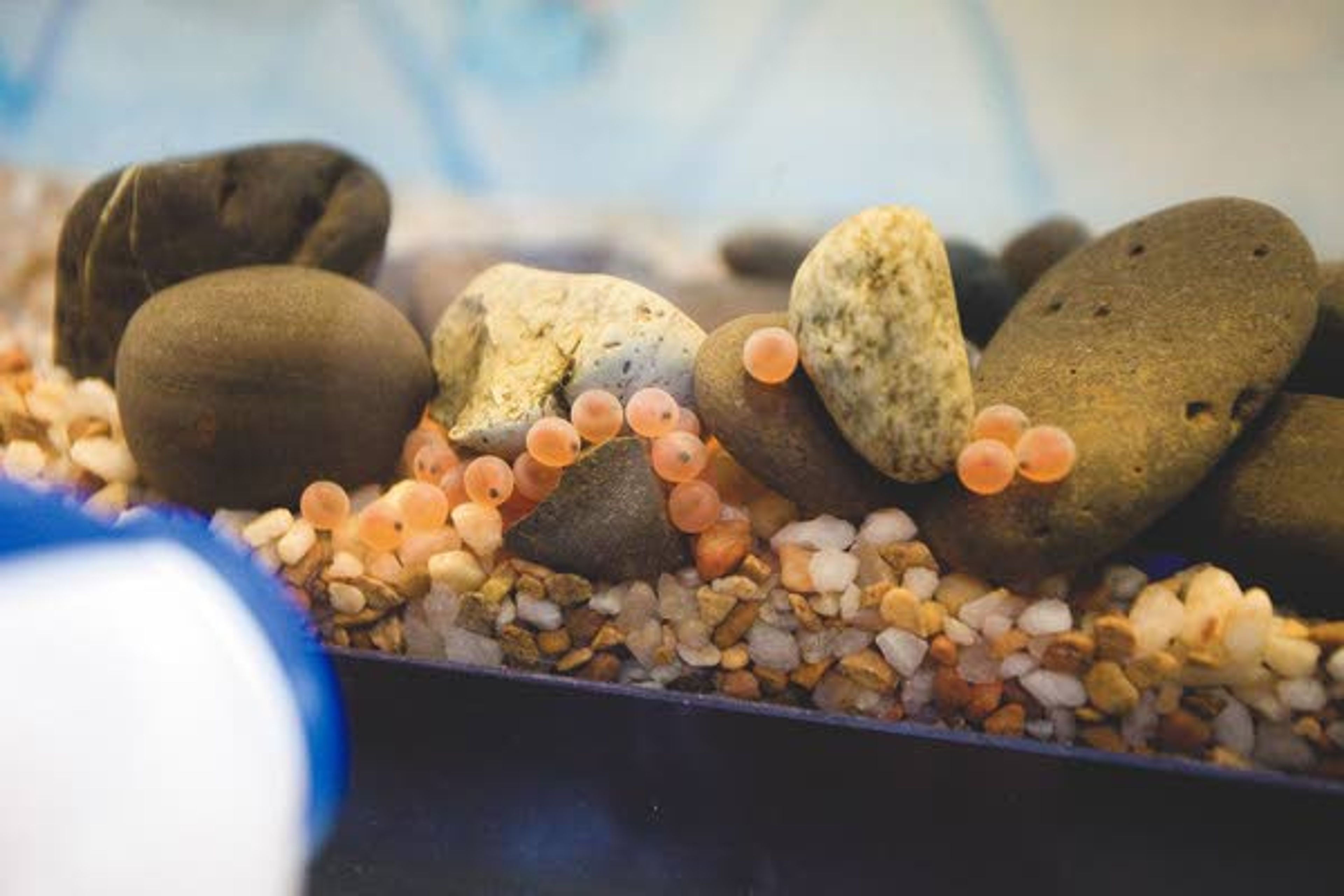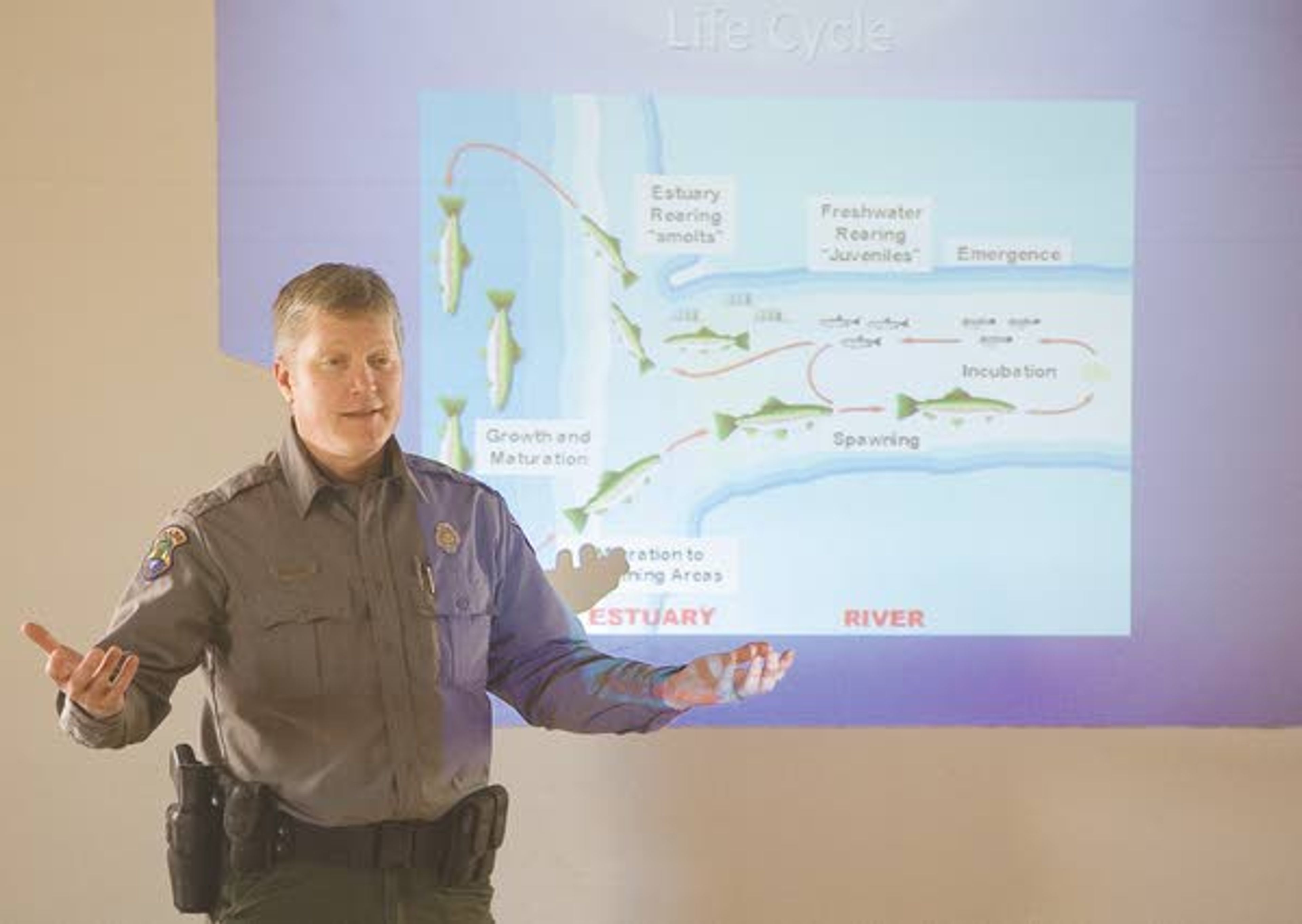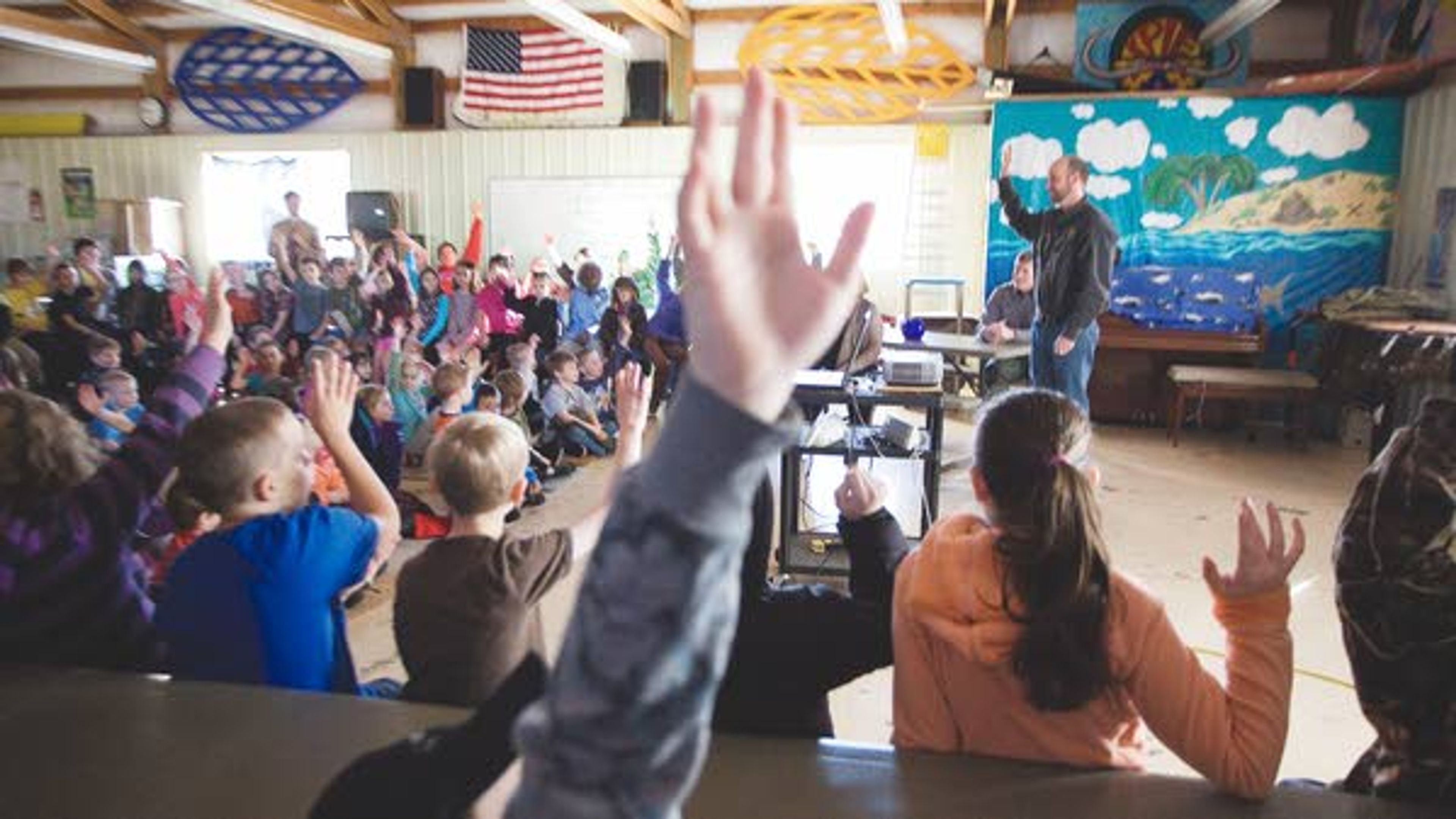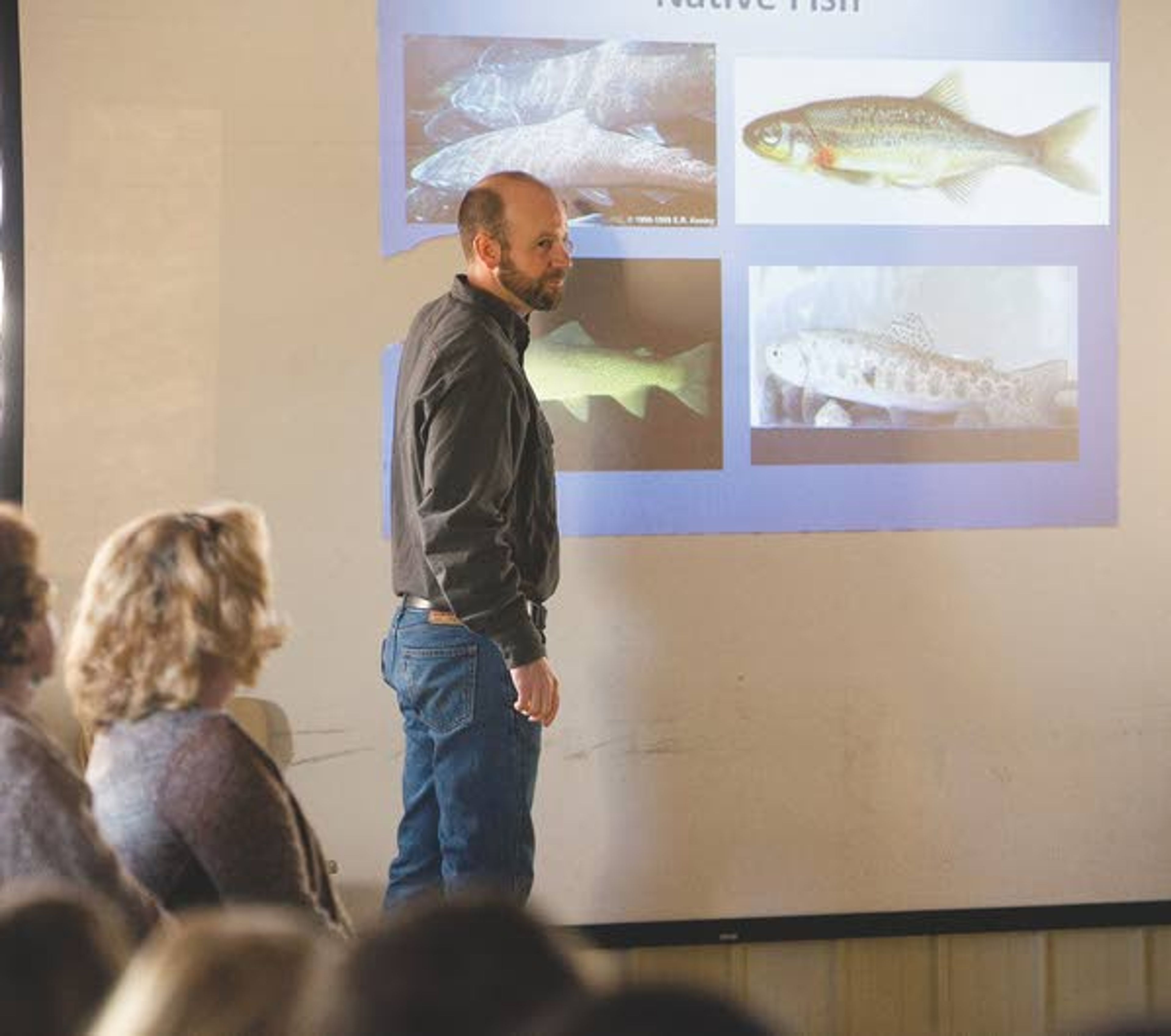Students go fishing for learning
EARTH THROUGH TIME AND HISTORY PROJECT
Moscow Charter School students will spend this spring raising 100 steelhead trout before releasing them into the wild.
Idaho Fish and Game brought the trout eggs into the school Wednesday, beginning an educational program on fish and their importance in Idaho.
The program is funded by a grant from the Idaho Fish and Game, which fourth-grade teacher Jana Horne received this year. The program is taught in schools around the state.
Fishery biologist Brett Bowersox and conservation officer Eric Crawford came to the school Monday to teach students about the different types of fish in Idaho and the life cycle they can expect from their own steelhead trout.
Crawford explained how the eggs are in the incubation stage and will soon hatch and become "parr" and eventually "smolts" before being released into a river near Spalding.
"They're no different from all of you. We have our kindergartners, they're kind of like parr and second-graders are our smolt," Crawford explained. "We're all growing as we go through the school and our smolt are gradually transitioning to their life out in the ocean."
The students' small eggs will eventually grow to be more than two feet long in the ocean, where they will reach maturity.
The eggs, brought in from the Dworshak National Fish Hatchery on the Clearwater River, should be hatching within a few days.
Before the eggs even arrived, the fourth-grade students were preparing the tank and the water conditions for the fish. When Bowersox brought the eggs he created a nest, or "redd," out of rocks for the eggs to rest in.
To maintain safe water conditions, the fourth-graders learned how to maintain the aquarium, including testing the temperature, pH, ammonia, nitrates and nitrites in the water. The records are kept online and Horne hopes to establish a blog for a long-running record.
Later on, the fourth-graders will also teach the fifth-graders how to conduct the water tests and the fifth-graders will, in turn, teach the sixth-graders.
The students also made predictions on which day the eggs will hatch, which are posted by the aquarium.
The trout study is a schoolwide project; every teacher received books and teaching materials. Even the art classes will be making fish paintings.
"We purposely put it in the hallway so it wasn't just in a classroom, people can come out and watch them as they develop," Principal Marie Axman said.
The trout are the main responsibility of the fourth-graders, however, who will release the fish into the river May 23.
"It really is an important learning experience for the fourth grade because they study Idaho history and our school theme this year is 'earth through time and history' and fish are certainly an important part of that," Axman said.
The fourth-graders are learning about the life cycle of a fish and will later tackle anatomy by dissecting steelhead trout.
The students' eggs can be seen online thanks to an aquarium camera set up by the school's technology teacher and webmaster. To see the eggs live, visit this shortened link: http://bit.ly/164bXYp.
Estelle Gwinn can be reached at (208) 882-5561, ext. 301, or by email to egwinn@dnews.com.
